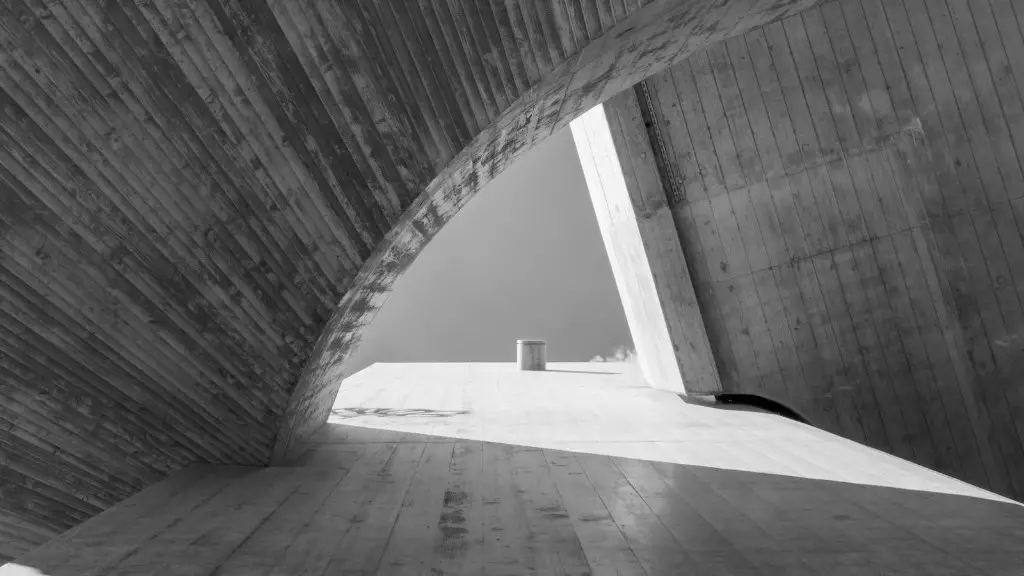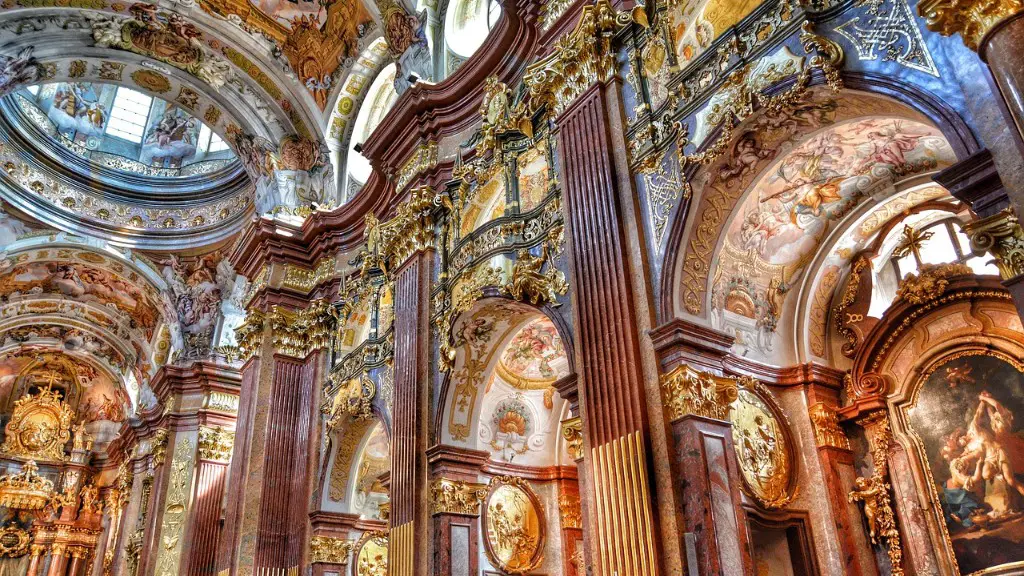Italy
When it comes to architecture, Italy is one of the most celebrated countries in the world. From its Roman-style aqueducts to its bell towers and its Baroque churches and palaces, Italy demonstrates a deep appreciation of architectural beauty. The most accomplished Italian architects, such as Michelangelo and Bernini, are still held in very high regard today and serve as a reminder of how timeless and beautiful the country’s architecture can be. When you visit Italy you can feel the richness of its architectural heritage; it is an incredible place for anyone who appreciates good design.
Italy is renowned for its classic and Renaissance architecture, with magnificent churches, palaces and public buildings such as the Pantheon in Rome. These buildings demonstrate Italy’s commitment to craftsmanship and a respect for the techniques and traditions of the past. Italian architects have also had a major influence on modern architecture, particularly through the work of renowned Italian architect Renzo Piano. Italy is still home to many great architects, who continue to innovate and create beautiful structures that combine the old with the new.
When you think of iconic architectural styles in Italy, the first thing that comes to mind is the iconic colosseum in Rome. This incredible structure, with its sweeping arches and classic details, is an impressive testament to its creators’ skill and ingenuity. But it is far from the only example of Italian architecture worth seeing. Throughout Italy you will find a vast array of unique and beautiful buildings, from medieval castles to Renaissance palaces. Even small towns and villages can be filled with fascinating architectural wonders, from Romanesque churches to Baroque town halls.
Italian architects are highly respected for their commitment to craftsmanship and attention to detail, which is why Italy is often first on the list of beautiful places to visit. From craggy mountain sides to dazzling coastlines and bustling cities, Italy is a treasure trove of architectural wonders, which is why so many people choose it as their holiday destination.
France
When it comes to architectural beauty, France has to be mentioned. From its iconic Eiffel Tower to its magnificent Gothic churches and ancient ruins, France is a nation of tremendous architectural variety. Visitors to the country are always astonished by the sheer number of impressive monuments, palaces and churches that the country has to offer. In Paris alone, there are literally dozens of iconic structures, from 19th-century masterpieces such as the Louvre to modern architectural marvels like the Pompidou Centre.
France has long been a centre of architectural innovation, and the country is home to some of the world’s most renowned architects. Claude Ledoux, for example, was one of the most significant Baroque architects of the 18th century and is best known for his work on the Palace of Versailles. The renowned architect Le Corbusier is also remembered for his influential take on modernism, while the visionary Jean Nouvel is credited with redefining city skylines in France.
French cities and towns are a delight to explore, with their unique and varied styles of architecture. From the graceful cathedrals of Reims to the elaborate châteaus of the Loire Valley, France is a treasure trove of architectural gems. Even the simplest buildings in small villages can be quite impressive; most French towns have an old-world charm that is quite captivating.
For anyone who loves architecture and history, France is an absolute must-visit destination. Its beauty is unparalleled, and its many monuments and buildings serve as reminders of its rich and diverse history. From Renaissance palaces to classical villas and modern skyscrapers, France is a place of incredible beauty and it is easy to see why it is so beloved by tourists from all over the world.
Spain
Spain is another country renowned for its stunning architecture. From its grand Gothic cathedrals to its winding streets and cobbled plazas, Spain is full of architectural treasures. One of the most beautiful places in the country is the city of Barcelona, where you can find countless examples of Gaudí’s imaginative and colourful design. The Sagrada Família is one of Barcelona’s most iconic landmarks, and is a must-see for anyone visiting the city.
In terms of architecture, Spain is renowned for its vernacular style, which combines influences from the Islamic world with elements of its traditional medieval architecture. This style is evident in many of the country’s churches and palaces, as well as in its fortifications and castles. Spanish architects, such as Santiago Calatrava and Rafael Moneo, are renowned for their innovation and creativity, which is why Spain is home to many modern and contemporary buildings that are considered masterpieces of architecture.
Visiting Spain is a great way to appreciate the country’s impressive architectural heritage. From its castles to its churches and its elegant plazas, you will find evidence of the great architects and builders who have shaped the country throughout its history. In addition to its more traditional structures, Spain is home to some of the most exciting contemporary buildings in Europe, such as the City of Arts and Sciences in Valencia.
Spain has become an increasingly popular destination for tourists and it is easy to see why. The country has something for everybody, from its vibrant cities to its picturesque villages, and its architectural heritage is second to none.
Germany
Germany is another country with a rich architectural heritage. From its cities filled with baroque and gothic buildings to its modernist masterpieces, Germany has a great variety of architectural styles to offer. One of the most famous examples of German architecture is the Brandenburg Gate in Berlin, which is the ultimate symbol of the country’s divided history.
In terms of modern architecture, Germany is home to some of the most renowned architects in the world, such as Mies van der Rohe, Walter Gropius and Hans Scharoun. These architects were responsible for some of the most iconic buildings of the 20th century, such as the Neue Nationalgalerie in Berlin and the German Pavilion in Barcelona.
In addition to its iconic monuments, Germany has some of the most beautiful cities and towns in the world. From its charming old town squares to its grandiose castles and cathedrals, Germany has attractions that are sure to delight any visitor. One of the most popular tourist destinations is Bavaria, which has some of the oldest and most impressive architecture in Germany, as well as breathtaking landscapes.
There is no doubt that Germany is an architectural treasure trove. With its impressive monuments, classic cities and stunning landscapes, Germany is a great place to explore and appreciate the beauty of architecture.
India
India is a country that is home to some of the most beautiful and diverse architectural styles in the entire world. From its timeless monuments and Islamic-style tombs to its traditional maharajas’ palaces and contemporary structures, India is a feast for the eyes. One of the most impressive architectural sites in India is the Taj Mahal in Agra, which is a truly stunning and breathtaking example of Mughal architecture.
India has a vast and varied architectural heritage, from its stunning ancient temples to its striking modern skyscrapers. Traditional Indian architecture often incorporates intricately carved stone and elaborate designs, as well as bright colours and motifs. The famous forts of Rajasthan, for example, are incredible examples of Indian architecture and give visitors a glimpse into the country’s rich culture and history.
India is also home to some of the most innovative and creative architects in the world. Architects such as Charles Correa, Kanvinde and Bawa are renowned for their designs, which often incorporate traditional Indian architecture with modern building techniques and materials. India is also home to some of the most fantastic modern structures in the world, such as the Lotus Temple in New Delhi and the iconic Global Vipassana Pagoda in Mumbai.
India is a country of incredible variety and beauty, and its architecture is a testament to its fascinating and diverse culture. From its grandiose monuments to its modern skyscrapers, India is a great place to explore and appreciate the beauty of architecture.
China
China is another country with a rich architectural history. It is home to some of the oldest and most impressive monuments in the world, as well as some of the most innovative and creative structures of the modern era. From classic Chinese Gardens and pagodas to modern skyscrapers and bridges, China is a country of amazing architectural diversity.
One of the most iconic structures in China is the Great Wall of China, which is an incredible example of ancient engineering and architecture. The Forbidden City in Beijing is also a testament to Chinese architects’ skill and ingenuity, as is the Temple of Heaven in Shanghai. In addition to these magnificent monuments, China is also home to some of the most modern architectural achievements in the world, such as the Shanghai Tower and the Guangzhou Opera House.
Chinese architecture has been heavily influenced by the country’s rich and complex history, as well as its diverse ethnic groups. Chinese architects have adopted a variety of styles and techniques, from traditional Chinese architecture to modernist and postmodernist designs. Traditional Chinese architecture is often characterised by its use of curved lines, vivid colours and intricate details, while modernist architects in China often focus on simple, geometric forms. Whatever the style, Chinese architecture is sure to delight any visitor.
China is a country of incredible contrast, and its architectural heritage is one of the most stunning in the world. Whether you visit its ancient monuments or admire its modernist achievements, you are sure to be awe-inspired by the beauty and diversity of China’s architecture.





